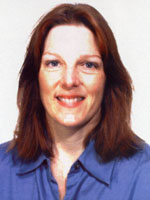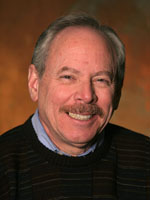
Amy Crumpton
American Association for the Advancement of Science

Alan Leshner
American Association for the Advancement of Science
AAAS and the Gordon Research Conferences
The American Association for the Advancement of Science (AAAS) has been a long-standing partner of the Gordon Research Conferences (GRC). In June 1937, at the AAAS meeting in Denver, Neil E. Gordon approached Forest R. Moulton, permanent secretary of AAAS, with the idea that the association sponsor a program of small research conferences on chemistry that he had led since 1931. The AAAS executive committee voted to authorize the conferences, provided that the association would not incur financial liabilities. Moulton recounted that “this action was reported to Dr. Gordon somewhat hesitantly, because it amounted to saying that if the conferences should be successful, the association would profit by them, and that if they should be unsuccessful, Dr. Gordon would be the only sufferer.” Gordon accepted the conditions, and the conferences indeed proved successful.
AAAS sponsored GRC as a formal program, sharing in the administrative stresses that came with the increasingly complex organizational venture. AAAS established an advising policy committee, composed primarily of industry scientists, with Gordon as chair and Moulton representing AAAS. By the summer of 1941 the conferences had grown from two to eight topical programs, offered during the summers on Gibson Island in the Chesapeake Bay near Baltimore. Sixty selected participants took part in each five-day AAAS-Gibson Island Conference program. At least thirty-three chemical companies contributed $1,000 apiece toward AAAS’s purchase and improvement of a large house on the island, soon renamed the Neil E. Gordon House, that provided extra accommodations for program attendees and a porch on which to hold program meetings. Further efforts to expand the conferences created friction with members of the nearby Gibson Island Club, who objected to overcrowding of the club’s lounging facilities and the “somewhat informal attire” of the scientists, who often failed to wear jackets in areas where the club required them. At the recommendation of the GRC’s management committee, the 1947 summer sessions were moved to Colby Junior College in New Hampshire. In 1948 the program was renamed the Gordon Research Conferences, and AAAS sold the Gibson Island property.
In the early years of the association’s partnership with the conferences the AAAS executive committee authorized final approval of conference management decisions. Moulton kept AAAS officers apprised of conference activities. In 1956 the management committee incorporated GRC in New Hampshire, which provided the newly independent organization tax-exempt educational status and relieved the association of its duties as trustee of the conference funds. The organization’s new constitution and bylaws established the GRC board of trustees, formed from the former management committee. Approval from the AAAS board of directors continued to be required for amendments to the constitution, but GRC, which managed its own affairs, rarely invoked this provision and excised it in 1980. Today, the AAAS chief executive officer still serves as a member of the GRC board, and the AAAS publication
Science continues to publish conference program announcements twice a year.
The conferences’ style and content has affected science and its applications tremendously. Early conference organizers maintained that the “objective” of GRC was “to sharpen [participants’] wits; not to obtain data.” GRC’s off-the-record policy–which discourages taking detailed notes, prohibits photographing slides or recording presentations, and for some time banned attendance by reporters–encourages in-depth exchange among peers. Philip Abelson, former editor of
Science, noted that the GRC provides “secluded spots where participants are free of distractions and the presence of nonscientists.” This format has fostered discussion about GRC’s broad effects on science and society. Former AAAS executive officer Dael Wolfe credited the 1973 Nucleic Acids GRC as an influential factor in the instigation of debate and subsequent conferences regarding the potentials and hazards of recombinant-DNA research and ultimately the National Institutes of Health guidelines for its safe practice. Richard S. Nicholson, another former AAAS executive officer, posited that “GRC’s cumulative contribution to communication and the advancement of science is enormous.” With more than 350 Gordon Research Conferences on topics in biology, physics, chemistry, and science education and policy, the conferences’ special format and growing international character poise the organization to continue as a major contributor to the advancement of science around the world.